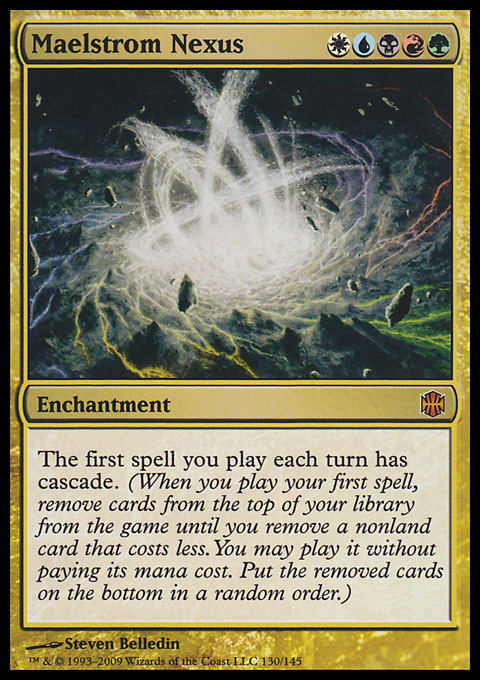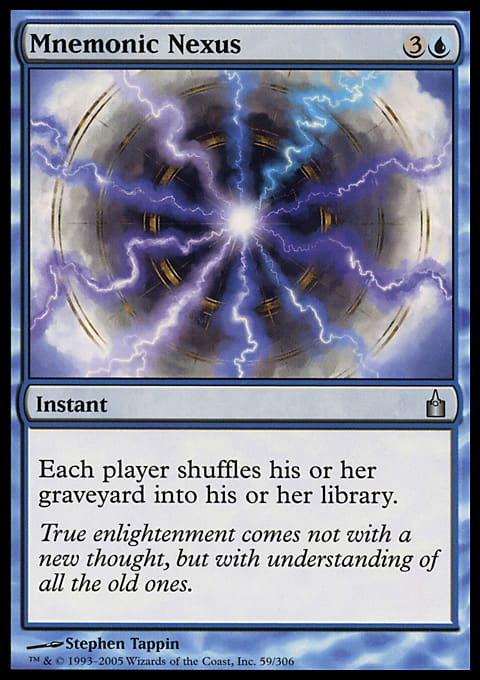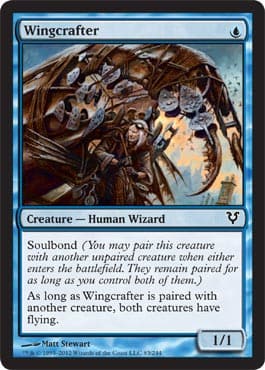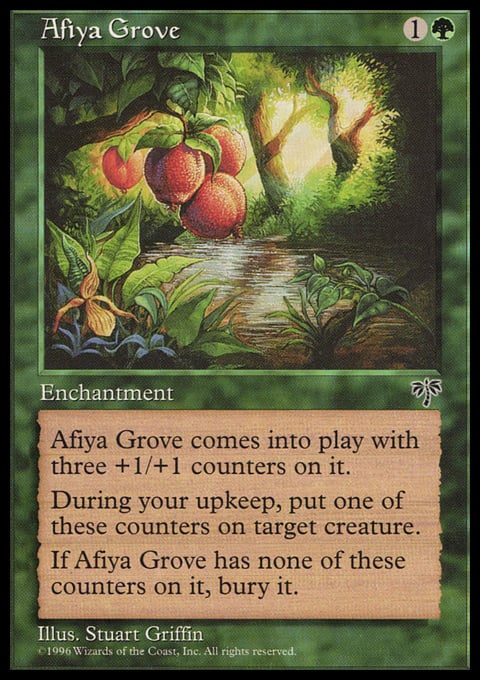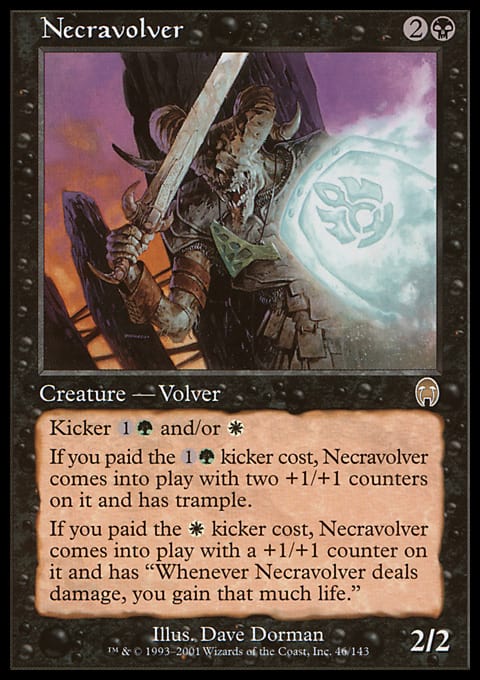In this experiment, we draft while we play.
I’ll be starting a new job next week, and because of that, this will be my last article. I’ve been brewing something for a while, so in preparation for this week, I had to make sure I pulled enough of the idea together to make it worth writing about.
So today, I present you Maelstrom Magic.
A lot of Magic players have heard of Ascension, Star Realms, Legendary Marvel, or the deck-building game often considered the progenitor of the genre: Dominion. The basic idea of these games is that each player starts with an identical set of basic cards, and throughout the course of gameplay, players can spend resources to buy more powerful cards to add to their decks. Players draw several cards at the end of each turn—usually five—after discarding whatever was left over. Players are constantly cycling through their decks, playing and replaying their basic starting cards as well as the cards they add to their decks over the course of the game.
What you actually do with your cards can vary from game to game—in Dominion, for example, some cards are worth points, and when the game ends, whoever has the most points’ worth of cards is the winner. In Legendary Marvel, on the other hand, cards aren’t worth any points, and players have to use their cards to defeat villains and a mastermind over the course of the game to actually earn points.
So my goal was to adapt the spirit of a deck-building game to playing Magic. Let’s get into it.
The Rules
First of all, you’ll need a Nexus. When playing the format Cube, players draft their decks from a collection of cards called a Cube. In Maelstrom Magic, players will draft their decks during play from a stack of cards called the Nexus. (So yes, the format is somewhat named after Maelstrom Nexus. Mnemonic Nexus made more sense because of all the reshuffling of the graveyard into the library we’ll end up doing, but the word mnemonic didn’t have much to do with anything otherwise . . . and Maelstrom Nexus is a much cooler card!)
You’ll also need a bunch of basic lands and a starting stack. The starting stack is comprised of ten 1-mana spells, two of each color. Split the starting stack in half, and add five cards from the shuffled Nexus to each half. Each of those halves forms a player’s starting deck. If you want to try multiplayer Maelstrom, you’ll need an additional five cards per player in your starting stack.
The purpose of the starting stack is to ensure each player has options starting from turn one. The reason each player doesn’t receive an identical starting deck (like in other deck-building games) is to encourage various directions for players to go in and to create more in-game diversity. In a game like Ascension, players are using their cards to interact with the center row, not each other, but a game of Magic would become stale if both players always started out with Silver Myr or something of the like.
Now that both players have their starting decks, deal three cards face down from the Nexus to form three separate draft piles. One of the piles should be understood to be “closer” to one player, while the opposite pile is “closer” to the other player. The third pile is the middle pile. For multiplayer Maelstrom, one pile is the one the closest to all the players, while the opposite pile will be farthest from all players.
We’re ready to begin, so let’s go over the rules changes.
Maelstrom Magic Rules
The rules of Magic are the same, except as described below.
The Graveyard
We’ll be drafting cards for our decks, and we’ll be discarding cards we don’t play each turn—we don’t want to be giving away information unnecessarily. Not only does this hidden information make things more exciting—you can surprise your opponent!—but it lowers the burden of information for players and makes everything less calculable.
Draw Step
The draw step is where most of the gameplay changes from the normal pattern of Magic. Normally during the draw step, the active player would draw a card. It’s pretty different here.
- The active player drafts, putting the drafted cards into his or her graveyard. Then, the player discards the cards in his or her hand and draws a number of cards equal to the number discarded plus two. These turn-based actions don’t use the stack.
- Both players skip their draw steps during their respective first turns.
- A player who attempts to draw a card from a library with no cards in it shuffles his or her library into his or her graveyard and continues drawing.
We’ll get into drafting in a second, but as you can see, the cards in players’ hands will be constantly rotating. Instead of keeping your cards and adding one to them to form your hand, you’ll be pitching everything and drawing as many as you had plus two, so what you have available will constantly be shifting. However, with relatively small decks, you’ll have a good idea for what to expect to draw from turn to turn.
Decks are constantly in flux. Graveyards and libraries come and go. Because of this system, there is no such thing as decking, Laboratory Maniac is irrelevant (or overpowered, depending on how you look at it), and milling is kind of pointless (though I suppose not completely).
Drafting
- To draft, the active player looks at the pile of cards that is closest to him or her. The player may draft them, putting them face down into his or her graveyard. Otherwise, the player may return the pile and place an additional card from the Nexus, without looking at it, onto the pile, proceeding by looking at the next pile and repeating the process. Once the player drafts a pile, he or she places a card from the Nexus, without looking at it, into that pile’s position to reform the pile. If the player doesn’t draft any of the three piles, he or she drafts the top card of the Nexus. (The player may look at the drafted card.)
The draft method is similar to Winston Draft, with the change that, for a two-player Maelstrom game, each player starts from a different direction relative to the piles. Of course, there’s also the big change that drafting occurs in the middle of gameplay and that players can start drawing the cards they’ve drafted a turn or two later.
Also, in a normal Winston Draft, picking up a big pile is great because it means more options for you during deck-building and fewer options for your opponent. But in Maelstrom, you’re adding a lot of cards to your deck, and they may not be cards you actually want to draw. You may draw enough that you can just ignore the ones you don’t like, but if you draw a hand full of bad spells, you may have reconsider your drafting methods.
Play a Land
- Playing a land is a special action. To play a land, a player exiles a card from his or her hand and puts any basic land onto the battlefield from outside the game. By default, a player can take this action only once during each of his or her turns. A player can take this action any time he or she has priority and the stack is empty during a main phase of his or her turn.
- If a player controls two or more different types of basic lands and wants to play a basic land with a subtype he or she does not control using this special action, the player must exile two cards from his or her hand instead of one.
You may have been wondering how players would be casting spells. There are no lands in the starting stack or the Nexus, and since you start playing without building a deck beforehand, you have to play lands from somewhere. Basically, you can play one land each turn, and it can be any basic land you want. To do so, however, you have to exile a card from your hand. The exiled card will not reshuffle into your library, so playing a land also serves as a way to remove a card from your deck so you don’t have to draw it anymore—though this will sometimes cause a difficult choice if your hand is full of spells you like and might want later in the game.
Also, you can see from that sub-bullet-point that your first two colors are free, but your third, fourth, and fifth will cost you. As an example, you can exile one card for a Plains on turn one and exile one card for an Island on turn two. You can exile one card for either a Plains or an Island for as much as you want on subsequent turns. But if you want a Swamp, you’ll need to exile two cards from your hand to access that third color. Once you have that Swamp, you can play additional ones at the normal cost of exiling a single card, but your first Mountain or Forest will cost you two cards.
Over the course of the game, players tend to eventually access four or five colors, but doing so can be costly to your overall hand size.
Weird Situations
Playing with these rules may cause some weird interactions and unexpected results (Leveler, anyone?). Rather than have a list of exceptions or special circumstances, the answer in general is to avoid cards that cause problems. Our graveyards are face down, and there’s not a huge point to casting Raise Dead anyway, since we’ll be drawing the creature again soon enough, so maybe that card just doesn’t need to be in your Nexus. Similarly, there are no basic lands in our libraries, so maybe Rampant Growth doesn’t make the cut. Like a Cube, we get to assemble our stacks of cards to create the experience we want, so just leave out the stuff that doesn’t really work right.
Building Your Nexus
So, what’s a new format without a list of cards to try it out? I’ll be sharing with you my Nexus, in addition to the guidelines I set up for myself when building it.
Basically, I went into building with the concept of modules. You don’t need modules. You can build your Nexus however you like it, with no rules except that the cards all work within the rules of Maelstrom and will create the experience you enjoy. But using modules was how I built a structured Nexus and made sure to include themes I liked while retaining the ability to easily swap those themes out later.
A module is just some number of cards that work well together—and perhaps some cards to combat that strategy. For this Nexus, I used allied-color-pair modules, each with five cards in one color, five cards in an allied color, and two cards of their enemy color to combat them. I also have a core of cards and, of course, the starting stack that doesn’t belong to any of the modules.
Other methods of using modules would be to use multiple five-color modules (Allies, Slivers, artifact-oriented, and so on), enemy-colored modules, shard modules (Shards of Alara), wedge modules (Apocalypse and/or Khans of Tarkir), or mono-colored modules, perhaps even making them tribal. The sky is the limit.
Starting Stack
The First Nexus: Starting Stack ? Maelstrom Magic | Andrew Wilson
- White (2)
- 1 Healing Salve
- 1 Wall of Hope
- Blue (2)
- 1 Peek
- 1 Wingcrafter
- Black (2)
- 1 Midnight Charm
- 1 Pulse Tracker
- Red (2)
- 1 Furnace Scamp
- 1 Shock
- Green (2)
- 1 Battlegrowth
- 1 Sprout
The starting stack can have whatever you want—you don’t even actually need a starting stack. I recommend it, though, to ensure players have something to do early and to give the game a little bit of a consistent starting point. These cards shouldn’t be too powerful but should have the ability to synergize with various themes and help players with their game plans—all while staying consistent to what their colors represent.
The Core
The First Nexus: Core ? Maelstrom Magic | Andrew Wilson
- Multicolored and Colorless (5)
- 1 Chromanticore
- 1 Desolation Twin
- 1 Draco
- 1 Maelstrom Nexus
- 1 Shapeshifter
- White (5)
- 1 Aura Blast
- 1 Banisher Priest
- 1 Martial Law
- 1 Serra Angel
- 1 War Oracle
- Blue (5)
- 1 Azure Mage
- 1 Counterspell
- 1 Mulldrifter
- 1 Soulblade Djinn
- 1 Wipe Away
- Black (5)
- 1 Grasp of Darkness
- 1 Nantuko Husk
- 1 Nekrataal
- 1 Priest of the Blood Rite
- 1 Throat Slitter
- Red (5)
- 1 Chandra's Fury
- 1 Glarewielder
- 1 Shivan Dragon
- 1 Torch Fiend
- 1 Urza's Rage
- Green (5)
- 1 Arbor Colossus
- 1 Briarhorn
- 1 Garruk's Packleader
- 1 Reclamation Sage
- 1 Thornweald Archer
Outside the module setup, I think it’s useful to have a core for your Nexus. These cards do what their colors are most about and ensure your Nexus has its fill of basic tools like removal, artifact and enchantment destruction, and solid finishers.
The five multicolored and colorless cards give some options to both players, regardless of what basic lands they play in the first few turns. This is another way to ensure games end eventually. These are some of the most powerful cards, and players can choose colors early, safely knowing they’re not locking themselves out of some of the most powerful spells the Nexus has to offer.
Maelstrom Nexus is the source of the format’s name, so it should probably be included in every Nexus no matter what. As for Shapeshifter, I just like it.
G/W Tokens
The First Nexus: G/W Tokens ? Maelstrom Magic | Andrew Wilson
- Green (5)
- 1 Bestial Menace
- 1 Feral Incarnation
- 1 Jade Mage
- 1 Raised by Wolves
- 1 Scatter the Seeds
- White (5)
- 1 Eyes in the Skies
- 1 Gather the Townsfolk
- 1 Phantom General
- 1 Retreat to Emeria
- 1 Take Up Arms
- Black (2)
- 1 Infest
- 1 Rising Miasma
It would be easy to take a module about tokens and just toss in a bunch of token-makers. But it’s kind of pointless without cards that actually care about having tokens. Eyes in the Skies is like Midnight Haunting, but it costs 1 more and lets you make an extra Elephant if you already have one. Phantom General and Retreat to Emeria let you power up your tokens. Feral Incarnation and Scatter the Seeds reward having tokens by becoming easier to cast with extra creatures around.
The black cards battle tokens by turning a bunch of 1/1s and 2/2s into nothingness—the Beasts and Elephants will be harder to deal with, but hey, someone worked hard for those.
W/U Auras
The First Nexus: W/U Auras ? Maelstrom Magic | Andrew Wilson
- White (5)
- 1 Divine Transformation
- 1 Ghostblade Eidolon
- 1 Graceblade Artisan
- 1 Hopeful Eidolon
- 1 Iona's Blessing
- Blue (5)
- 1 Eel Umbra
- 1 Flitterstep Eidolon
- 1 Illusionary Armor
- 1 Metathran Elite
- 1 Nimbus Naiad
- Red (2)
- 1 Lose Calm
- 1 Press into Service
One important element to building a module—or a Nexus in general—is ensuring you have balanced costs among the cards. Deck-builders and Cube-builders alike will already understand this lesson, but it’s easy to forget when assembling a list of cool cards that synergize. Also, it’s not always important to put the best cards in the slots, as Divine Transformation attests. You may want to build a Nexus that’s an equivalent of a powered Cube, so your mileage may vary, but I prefer a lower overall power level in my games of Magic.
For an Auras module, it was important not just to include Auras, but make sure they mattered. Perhaps Auramancer's Guise should have a spot here, but Graceblade Artisan and Metathran Elite do the job of making sure the enchantments will matter for more than just face value.
The red cards are Threaten effects that can take a massive, Aura-enhanced creature and turn the tides.
U/B Faeries
The First Nexus: U/B Faeries ? Maelstrom Magic | Andrew Wilson
- Blue (5)
- 4 Faerie Miscreant
- 1 Sprite Noble
- Black (5)
- 1 Oona's Blackguard
- 1 Pack's Disdain
- 1 Peppersmoke
- 1 Thieving Sprite
- 1 Violet Pall
- Green (2)
- 1 Squall
- 1 Watcher in the Web
In both Cube and Commander, there’s a one-of card rule. Well, that’s actually not true in Cube, though many people treat it as though it is. You see, if you build a Commander deck, you have to have followed the rules everyone else is following so that when you start battling, no one is surprised at an off-balanced playing field. But when you build a Cube, everyone who drafts it will be following your rules—whatever rules you set.
The same applies here: If you want to include more than one copy of a card in your Nexus, there’s no reason you can’t. Accumulated Knowledge and Flame Burst aren’t going to do the job because of the face-down and rotating graveyards, but Faerie Miscreants can cloud up the skies and garner their controller a good bit of card advantage, which remains important in Maelstrom despite the changes to the draw step.
I’ll also note that the Squall I included is the Starter edition, which has the misprint of being costed at ![]()
![]() instead of
instead of ![]()
![]() , as the Mercadian Masques and Seventh Edition printings are. That’s because I wanted the effect to be costed at
, as the Mercadian Masques and Seventh Edition printings are. That’s because I wanted the effect to be costed at ![]()
![]() for my Nexus. See? We make our own rules here.
for my Nexus. See? We make our own rules here.
B/R Aggro
The First Nexus: B/R Aggro ? Maelstrom Magic | Andrew Wilson
- Black (5)
- 1 Alesha's Vanguard
- 1 Geth's Verdict
- 1 Reckless Imp
- 1 Vendetta
- 1 Wretched Anurid
- Red (5)
- 1 Crimson Mage
- 1 Heartlash Cinder
- 1 Inner-Flame Acolyte
- 1 Lightning Mauler
- 1 Lightning Shrieker
- White (2)
- 1 Chastise
- 1 Pride Guardian
This module is perhaps the least themed—maybe I should have gone for something like Goblins. It’s also among the least synergistic, making it weaker, and almost certainly less compelling during gameplay, among the modules.
But that’s the beauty of the modules to begin with: Since I have these twelve cards separated out already, I can just pull them and replace them with a differently themed module without disrupting the rest of the Nexus.
Lightning Shrieker is worth noting here, as I mostly tried to avoid cards that caused weirdness with the Maelstrom rules. You cast the Shrieker, attack, and shuffle it into your library. During your next draw step, you’ll pitch your whole hand and draw from said library several new cards. Since libraries are relatively small in Maelstrom, there are good odds you’ll be drawing that Lightning Shrieker every turn or two. That’s potentially a lot of Lava Axes. Because we’re cycling through our library–graveyard, we’ll see a lot of our cards multiple times anyway, but the Shrieker’s putting itself back in the library will just make its appearances even more frequent.
Meanwhile, the dash creatures won’t be able to dash out every turn, but they won’t cost card advantage, either, as long as they survive.
R/G Counters
The First Nexus: R/G Counters ? Maelstrom Magic | Andrew Wilson
- Red (5)
- 1 Curse of Stalked Prey
- 1 Fierce Invocation
- 1 Ordeal of Purphoros
- 1 Splatter Thug
- 1 Volt Charge
- Green (5)
- 1 Afiya Grove
- 1 Battlefront Krushok
- 1 Gyre Sage
- 1 Kavu Titan
- 1 Phantom Tiger
- Blue (2)
- 1 Frozen Solid
- 1 Sweep Away
The final module is all about +1/+1 counters. Just as with tokens and Auras, we have ways to generate the +1/+1 counters and ways to make them matter. Ordeal of Purphoros fires off more quickly when the enchanted creature already has a few counters on it, though it can alternatively be used to make a creature bigger over a few attack steps. Volt Charge pumps up already-pumped creatures, Afiya Grove and Curse of Stalked Prey make any of our creatures bigger, and Battlefront Krushok puts all our enhanced creatures on Familiar Ground.
Kavu Titan and Splatter Thug just bring counters with them, while Phantom Tiger and Gyre Sage become more powerful than just through size when they build up more counters.
Meanwhile, the blue cards offer ways to neutralize big threats: Frozen Solid by just saying no and Sweep Away by sending a creature into the aether, sans +1/+1 counters for its return. Sweep Away also creates an interesting decision in Maelstrom.
Send the creature to its owner’s hand, and it’ll be pitched with that player’s hand during that player’s draw step, but the player will count that creature as a card in hand when redrawing. (Like a normal bounce spell, you’re down a card.) But if you put the creature on top of its owner’s library, Sweep Away becomes a one-for-one while potentially letting that creature come back immediately on the next turn. In normal Magic, a bounce spell is just worse than a Repel effect because of card advantage, but in Maelstrom, bouncing a creature can actually mean it stays gone for longer.
Bonus!
So with twelve cards per module and five modules, a thirty-card core (five cards per color and five colorless and multicolored), and the ten-card starting stack, we’re at exactly one hundred cards! That means, aside from the basic lands we’ll need, a Nexus is exactly as portable as a Commander deck.
But of course I couldn’t restrain myself. I had to squeeze in just five more cards. Dilution makes the modules less synergistic and the core less able to sustain the format with the utility it provides, but I just can’t resist throwing the Volvers into a stack like this. Other cycles would work just as well, such as the ’Scape Masters (Sunscape Master), the Shards Battlemages (Esper Battlemage), the ’Scape Battlemages (Nightscape Battlemage), the Magic 2015 off-color activators (Crimson Muckwader), or even the khans of Khans of Tarkir (Surrak Dragonclaw).
The First Nexus: Bonus! ? Maelstrom Magic | Andrew Wilson
- Volvers (5)
- 1 Degavolver
- 1 Cetavolver
- 1 Necravolver
- 1 Rakavolver
- 1 Anavolver
The Volvers, however, work great in this format because they can come out early as necessary as just Vanilla Test failures. Then, as the mana—in both quantity and color—becomes available and the creatures die and are recast, various kicker costs can be paid. Basically, spells with kicker are quite good in Maelstrom for their versatility, and cards requiring multiple colors keep things interesting over the course of the game. So the Volvers are kind of perfect here.
I once played Volvers in a Tribal tournament, so it’s not as though they weren’t among the first five cards to go into my Maelstrom Nexus.
Thanks, everyone, for reading my awful, awkward, weird, crazy, derivative, and fun combos over the past four years. I hope some of my ideas inspired your deck-building, and I hope you give Maelstrom a try. I’d love to see some modules of various shapes and sizes, and I’d love to see the format get some play.
For now, and for some indeterminate time further into the future, I’m Andrew saying, “Crap, this was my old signoff style.”
Andrew Wilson
fissionessence at hotmail dot com
The First Nexus ? Maelstrom Magic | Andrew Wilson
- Starting Stack (10)
- 1 Healing Salve
- 1 Wall of Hope
- 1 Peek
- 1 Wingcrafter
- 1 Midnight Charm
- 1 Pulse Tracker
- 1 Furnace Scamp
- 1 Shock
- 1 Battlegrowth
- 1 Sprout
- The Core (30)
- 1 Chromanticore
- 1 Desolation Twin
- 1 Draco
- 1 Maelstrom Nexus
- 1 Shapeshifter
- 1 Aura Blast
- 1 Banisher Priest
- 1 Martial Law
- 1 Serra Angel
- 1 War Oracle
- 1 Azure Mage
- 1 Counterspell
- 1 Mulldrifter
- 1 Soulblade Djinn
- 1 Wipe Away
- 1 Grasp of Darkness
- 1 Nantuko Husk
- 1 Nekrataal
- 1 Priest of the Blood Rite
- 1 Throat Slitter
- 1 Chandra's Fury
- 1 Glarewielder
- 1 Shivan Dragon
- 1 Torch Fiend
- 1 Urza's Rage
- 1 Arbor Colossus
- 1 Briarhorn
- 1 Garruk's Packleader
- 1 Reclamation Sage
- 1 Thornweald Archer
- Green-White Tokens (12)
- 1 Bestial Menace
- 1 Feral Incarnation
- 1 Jade Mage
- 1 Raised by Wolves
- 1 Scatter the Seeds
- 1 Eyes in the Skies
- 1 Gather the Townsfolk
- 1 Phantom General
- 1 Retreat to Emeria
- 1 Take Up Arms
- 1 Infest
- 1 Rising Miasma
- White-Blue Auras (12)
- 1 Divine Transformation
- 1 Ghostblade Eidolon
- 1 Graceblade Artisan
- 1 Hopeful Eidolon
- 1 Iona's Blessing
- 1 Eel Umbra
- 1 Flitterstep Eidolon
- 1 Illusionary Armor
- 1 Metathran Elite
- 1 Nimbus Naiad
- 1 Lose Calm
- 1 Press into Service
- Blue-Black Faeries (12)
- 4 Faerie Miscreant
- 1 Sprite Noble
- 1 Oona's Blackguard
- 1 Pack's Disdain
- 1 Peppersmoke
- 1 Thieving Sprite
- 1 Violet Pall
- 1 Squall
- 1 Watcher in the Web
- Black-Red Aggro (12)
- 1 Alesha's Vanguard
- 1 Geth's Verdict
- 1 Reckless Imp
- 1 Vendetta
- 1 Wretched Anurid
- 1 Crimson Mage
- 1 Heartlash Cinder
- 1 Inner-Flame Acolyte
- 1 Lightning Mauler
- 1 Lightning Shrieker
- 1 Chastise
- 1 Pride Guardian
- Red-Green Counters (12)
- 1 Curse of Stalked Prey
- 1 Fierce Invocation
- 1 Ordeal of Purphoros
- 1 Splatter Thug
- 1 Volt Charge
- 1 Afiya Grove
- 1 Battlefront Krushok
- 1 Gyre Sage
- 1 Kavu Titan
- 1 Phantom Tiger
- 1 Frozen Solid
- 1 Sweep Away
- Bonus! Volvers (5)
- 1 Degavolver
- 1 Cetavolver
- 1 Necravolver
- 1 Rakavolver
- 1 Anavolver
















